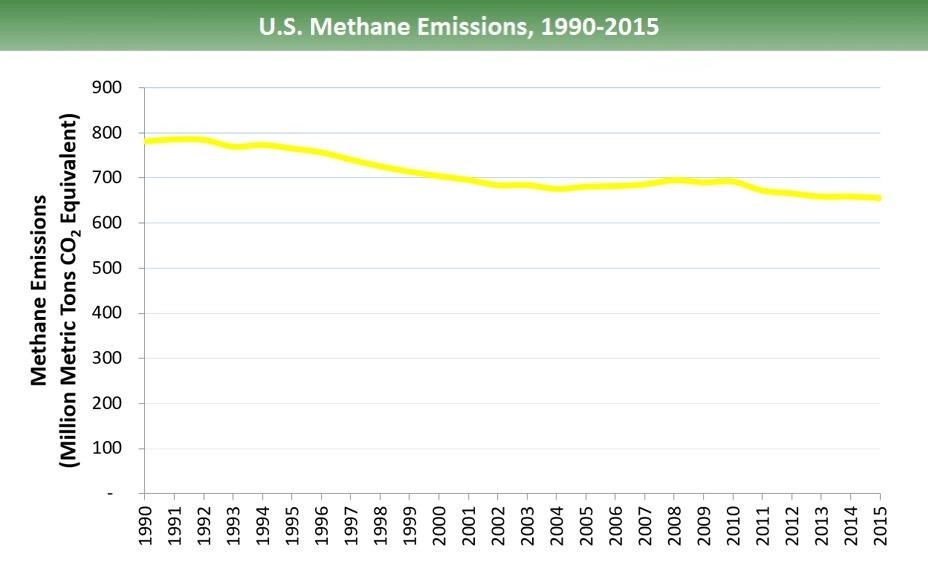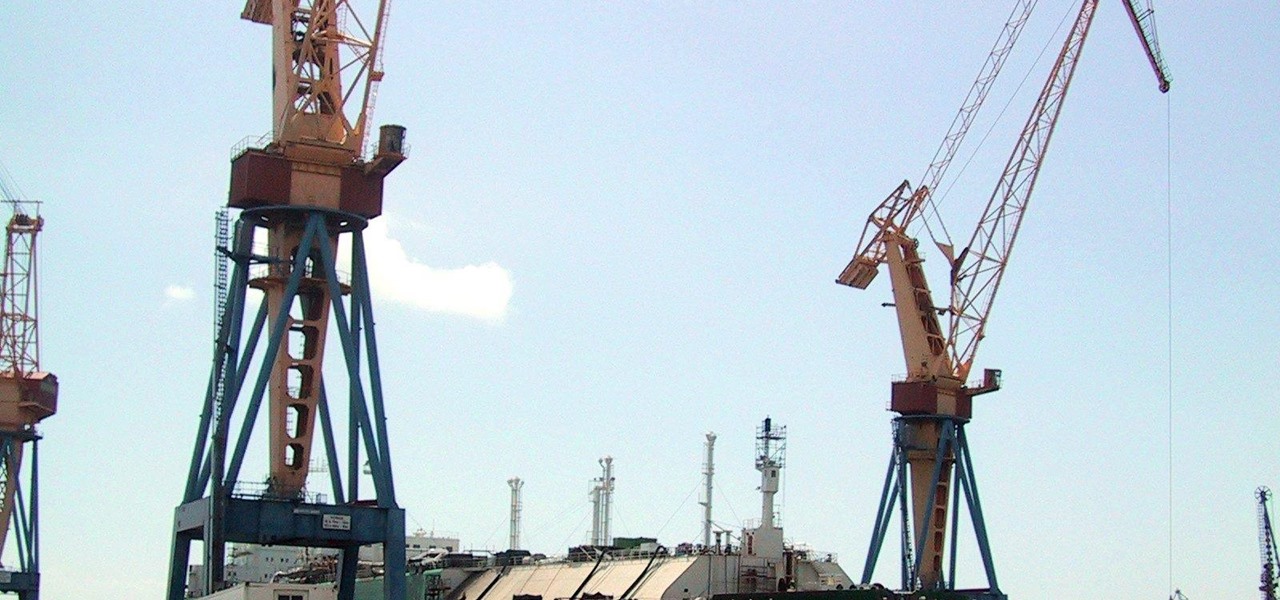About a third of the methane released into the environment comes from the production and transport of natural gas. The gas leaks as it moves along the transport chain from gas wellheads to market.
To trap methane and produce a useful product in the process, a group of scientists has developed a technique to convert methane into electricity close to the wellheads. And they found a bacteria that will do the job for them.
Their research was published May 17th in Nature Communications.
"When you ship methane, you release a greenhouse gas. We can't eliminate all the leakage, but we could cut it in half if we didn't ship it via pipe long distances," Thomas K. Wood, a researcher at Penn State and co-author of the study, said in a press release.
The Problem with Methane
Methane emissions in the US decreased about 16% between 1990 and 2015, mostly due to reductions from landfills and fossil fuel production. But, emissions from agricultural activities, including a significant contribution from the digestive system of cows via their farts and burps, increased during this same time.

Methane might only account for 10% of all greenhouse gases, but it does a much better job of trapping heat and contributing to global warming than carbon dioxide.
Pound for pound, methane's effect to create global warming is 25 times greater than carbon dioxide, and that's why it's accumulating in the atmosphere is so alarming. Between 2000 and 2006, methane concentrations in the atmosphere rose only about 0.5 parts per billion per year. Then, from 2007 to 2015, concentration increases took a 15-fold upturn, rising an average of about seven parts per billion per year, with larger increases in 2014 (12.5 parts per billion) and 2015 (9.9 parts per billion).

Methane may be accumulating, but compared to the 20–200 years it takes for natural processes to remove carbon dioxide from the atmosphere, methane's 12-year lifespan in the atmosphere is relatively short.
We might be able to offset methane's stronger impact on global warming by reducing emissions and thereby reducing accumulation. We just need new technology to do so.
The Search for Methane-Eating Bacteria
Fuel cells that convert chemical energy to electrical energy using microorganisms already exist and the bacteria that power them can run on organic material, like wastewater, acetate, and brewing waste. But finding bacteria that would consume methane presented more of a challenge to the researchers. Those bacteria do exist, but they live deep in the ocean so aren't exactly a readily available source of microbes for fuel cells. Additionally, scientists haven't been able to grow the deep sea bacteria in the lab.

To make bacteria that can both live in the lab and metabolize methane, the researchers created their synthetic bacteria and gave it a Frankenstein of different genetics that had the features they wanted. After finding an organism, Methanosarcina acetivorans, at the bottom of the Black Sea that would eat methane, Wood and his team used the genetic DNA sequences in the bacteria to synthesize, then clone, their bacteria in the lab.
The bacteria they created produces an enzyme called methyl-coenzyme M reductase that captures methane, producing electrons and secreting acetate in the process. The researchers added another bacteria, Geobacter to the mix, which consumes the acetate by-product and produces more electrons.
They found that a mixture of bacteria found in sludge from waste treatment was a critical component of the microbial fuel cell — the fuel cell couldn't create electricity without it. Bacteria in the sludge produce compounds that move the electrons to an electrode. That flow of electrons to an electrode produces electricity.
The microbial fuel cell prototype developed in the lab consisted of two small bottles, joined by a side port in each bottle. Into the bottle representing the battery anode — the negatively charged compartment — was placed Methanosarcina acetivorans, Geobacter, and sludge. Methane gas was added to the top of the bottle contents to mimic conditions at the wells. The second bottle served as the cathode — the positively charged compartment — and contained a chemical called ferricyanide. Electrons from the anode flow to the cathode where they convert ferricyanide to ferrocyanide and complete the circuit for the generation of electricity that was captured and measured by the researchers.
Generation of electricity is a secondary benefit of the researchers' solution to methane leaks at gas wells. And in terms of electricity generation, the current microbial fuel cell is pretty weak.
"This process makes a lot of electricity for a microbial fuel cell. However, at this point that amount is 1,000 times less than the electricity produced by a methanol fuel cell," said Wood in the press release.
We have a chance to dampen the powerful effect of methane on global warming by decreasing our emissions from fossil fuels. Eliminating methane leakage at the source of wells, while producing electricity at the same time is a solution with two benefits. Hopefully, the patent on the new technology filed by the researchers will lead to improvements in both the methane reduction and electricity generation.
Just updated your iPhone? You'll find new emoji, enhanced security, podcast transcripts, Apple Cash virtual numbers, and other useful features. There are even new additions hidden within Safari. Find out what's new and changed on your iPhone with the iOS 17.4 update.


























Be the First to Comment
Share Your Thoughts